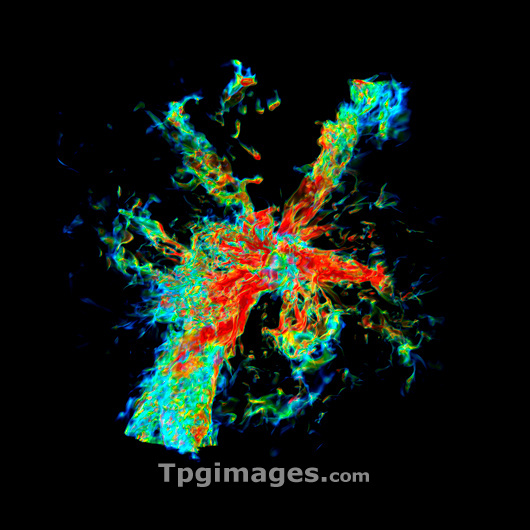
Galaxy formation. Image 3 of 3. Supercomputer simulation modelling the growth of galaxies. This image shows the expansion of primordial gas 1 billion years after the start of the simulation. Colours represent increasing gas density from red, orange, yellow, green to blue as the most dense. The frame measures 326,000 light years across. Within the gas cloud are clusters of new stars (unseen) which eventually die and explode as supernovae. The explosions create heavy elements which enrich the gas and become recycled to repeat the process of new star formation. Previous calculations suggest that galaxy formation was a slow and gradual process lasting 10 billion years. The present model suggests it is much quicker, with most heavy elements created by 1 billion years. This simulation was performed in 2006 on the Earth Simulator supercomputer, Japan. For complete sequence, see images R590/123-R590/125.
| px | px | dpi | = | cm | x | cm | = | MB |
Details
Creative#:
TOP03224756
Source:
達志影像
Authorization Type:
RM
Release Information:
須由TPG 完整授權
Model Release:
N/A
Property Release:
N/A
Right to Privacy:
No
Same folder images:

 Loading
Loading